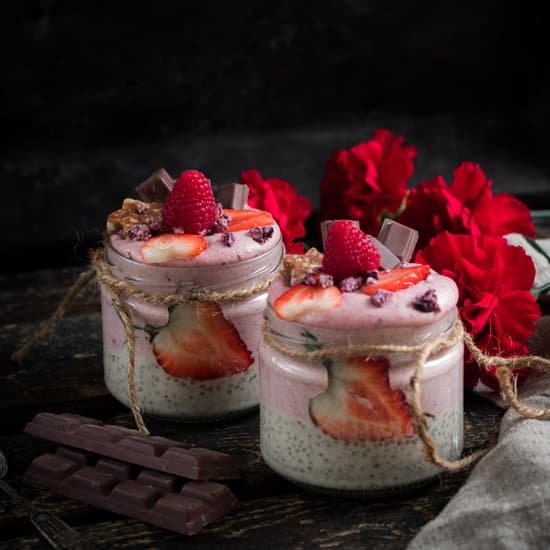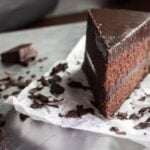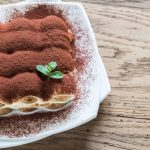Cake decorating has become an increasingly popular hobby and profession in recent years, with many people trying their hand at creating visually stunning and delicious cakes. One common question that arises is, “Is cake decorating hard?” This article will explore the world of cake decorating, from defining what it is to discussing the essential skills, tools, techniques, challenges, and tips for success in this creative field.
The art of cake decorating involves using various techniques and tools to adorn cakes with intricate designs and decorations. It plays a crucial role in creating visually appealing treats that not only look good but also taste delicious. From simple buttercream swirls to elaborate fondant sculpting, cake decorating allows bakers to showcase their creativity and craftsmanship.
To excel in cake decorating, one must possess a unique set of skills that include patience, attention to detail, and creativity. Mastering these skills can take time and practice, but with dedication and passion for the craft, anyone can become proficient in creating beautiful cakes. In the following sections, we will delve into the necessary tools and materials required for cake decorating, as well as highlight some of the common challenges faced by beginners in this field.
What Is Cake Decorating
Cake decorating is an art form that combines creativity, precision, and technical skill to transform a simple cake into a work of art. The process involves using various techniques and tools to add designs, textures, colors, and other decorative elements to the surface of the cake. By enhancing the visual appeal of the cake, decorators not only make it more attractive but also elevate its taste and overall presentation.
One of the most important aspects of cake decorating is the ability to understand how different ingredients and flavors work together. Decorators must have a good grasp of baking basics, such as measurements, temperatures, and baking times. They should also have knowledge of various types of icing, fondant, edible decorations, and coloring techniques to bring their creative visions to life.
In addition to making cakes visually appealing, cake decorating is essential for creating cakes that taste delicious. By incorporating different flavors, fillings, and textures into their designs, decorators can enhance the overall eating experience for those enjoying the cake. This balance between aesthetics and taste is what sets skilled cake decorators apart from others in the field. With patience.
attention to detail, and some practice, anyone can learn how to decorate cakes like a pro.
| Aspect | Description |
|---|---|
| Creativity | The ability to think outside the box and come up with unique designs. |
| Precision | The skill required for accurate measuring, cutting, and shaping of decorations. |
| Technical Skill | Knowledge of various tools and techniques needed for successful cake decorating. |
Skills Needed for Cake Decorating
Cake decorating is an art form that requires a unique set of skills to master. Patience, attention to detail, and creativity are essential qualities for successful cake decorating. These skills not only contribute to the visual appeal of the final product but also play a significant role in ensuring the taste and texture of the cake meet expectations.
To excel in cake decorating, one must possess patience. Decorating a cake can be a time-consuming process, especially when intricate designs are involved. Patience is necessary when piping delicate patterns or meticulously placing edible decorations on the cake. Without patience, it can be challenging to achieve the desired results and create a flawless masterpiece.
Attention to detail is another crucial skill for successful cake decorating. From ensuring smooth and even frosting application to perfecting intricate designs, every detail matters in creating visually appealing cakes. Attention to detail also involves consistency in measurements, colors, and textures to maintain uniformity throughout the decoration process. By paying close attention to every aspect of cake decorating, decorators can elevate their creations to professional levels.
Creativity is perhaps the most important skill in cake decorating as it allows decorators to think outside the box and design unique cakes that showcase their individual style. Creative thinking helps decorators come up with innovative ideas for cake designs, color schemes, and themes that will captivate their audience. Whether it’s designing custom birthday cakes or crafting elaborate wedding cakes, creativity plays a vital role in making each creation stand out from the rest.
Tools and Materials
Cake decorating is a creative and rewarding skill that allows individuals to express their artistic flair while also delighting others with visually stunning and delicious cakes. To achieve professional-looking results, it is essential to have the right tools and materials at your disposal. Whether you are a beginner or an experienced baker, having the following essentials in your cake decorating kit will help you elevate your creations to the next level.
Piping Bags and Tips
Piping bags and tips are indispensable tools for cake decorators as they allow for precision and control when applying frosting or buttercream onto cakes. These bags come in various sizes and materials, such as disposable plastic or reusable cloth, while tips range from basic round tips for outlining to specialty tips for creating intricate designs like flowers and leaves. Experimenting with different tip shapes and piping techniques can add depth and dimension to your cake decorations.
Fondant
Fondant is a versatile sugar paste that is used to cover cakes or create decorative elements such as flowers, figures, and patterns. Available in a range of colors, fondant can be rolled out like dough and shaped into any desired design. To work with fondant effectively, it is important to have a smooth work surface, rolling pin, cornstarch or powdered sugar for dusting, and tools like cutters, molds, and veining tools for detailing.
Edible Decorations
Edible decorations play a crucial role in enhancing the overall look of a cake. From sprinkles, edible glitter, and dragees to edible pearls, wafer paper flowers, and chocolate decorations, incorporating these elements can add texture, sparkle, and contrast to your cake designs. Edible markers can also be used for detailing or adding personalized messages on cakes. With the right tools and materials at hand, aspiring cake decorators can unleash their creativity and turn ordinary cakes into extraordinary works of art.
Techniques in Cake Decorating
Cake decorating involves a myriad of techniques that can elevate a simple cake into a work of art. One of the most common and versatile techniques is piping, where frosting is squeezed through a piping bag with various tips to create intricate designs, borders, and lettering on cakes. Piping allows decorators to showcase their creativity and precision, whether it’s creating delicate flowers or elegant swirls on the cake’s surface.
Another popular technique in cake decorating is fondant modeling, which involves shaping and molding a pliable icing called fondant into different figures, shapes, and textures. Fondant provides decorators with a smooth canvas to work on and enables them to craft intricate details like figurines, bows, and patterns on cakes. With the right tools and techniques, fondant modeling can add a touch of elegance and sophistication to any cake design.
In addition to piping and fondant modeling, airbrushing is another advanced technique that can elevate cake decorating to new heights. Airbrushing involves using an airbrush tool to spray edible colors onto cakes, creating seamless gradients, shadows, and intricate designs. This technique allows decorators to achieve professional-looking finishes and adds depth and dimension to their creations. While mastering airbrushing may require some practice and skill development, the stunning results are well worth the effort.
Challenges in Cake Decorating
Cake decorating, though a highly rewarding and creative skill, comes with its fair share of challenges, especially for beginners. Mastering the art of cake decorating requires patience, practice, and perseverance. One of the most common challenges faced by newcomers to cake decorating is achieving smooth icing on cakes. Uneven or lumpy frosting can detract from the overall look of a cake, but with the right techniques and tools, this challenge can be overcome.
To ensure a perfectly smooth finish on your cakes, here are some tips:
- Chill your cake layers before frosting to prevent crumbs from mixing into the icing.
- Use a crumb coat – a thin layer of icing applied before the final coat – to seal in any loose crumbs.
- Invest in an offset spatula for easy spreading and smoothing of icing.
Another common challenge in cake decorating is creating intricate designs with piping techniques. Piping requires steady hands and practice to achieve precise lines and shapes. To improve your piping skills and overcome this hurdle, consider these tips:
- Practice piping on parchment paper or a practice board before attempting it on your cake.
- Start with basic piping tips and gradually work your way up to more complex designs.
- Consistency in pressure is key – apply even pressure on the piping bag for consistent lines.
By honing these skills and techniques through practice and determination, even beginners can overcome the challenges of cake decorating and create stunning works of edible art that will delight friends, family, or clients. With dedication and a willingness to learn from mistakes, anyone can master the art of cake decorating over time.
Tips for Successful Cake Decorating
Cake decorating is a creative and rewarding skill that allows individuals to express their artistic talents while creating delicious treats. While some may wonder, “Is cake decorating hard?” – the truth is that it can be challenging, especially for beginners. However, with practice, patience, and the right guidance, anyone can improve their cake decorating skills and create stunning cakes.
One important tip for successful cake decorating is to start with the basics. Mastering foundational skills such as leveling and stacking cakes, crumb coating, and piping borders will set a solid groundwork for more advanced techniques. It’s also essential to practice consistency in piping pressure and hand movements to achieve uniform designs on the cake.
Another helpful tip is to invest in quality tools and materials. Having the right equipment, such as piping bags, tips of various sizes and shapes, fondant tools, edible decorations, and a turntable can make a significant difference in the outcome of your decorated cakes. High-quality ingredients like premium fondant and food coloring can also enhance the final look and taste of your creations.
Furthermore, don’t be afraid to experiment and think outside the box when it comes to cake decorating. Trying new techniques, mixing different colors or patterns, and incorporating unique design elements can help elevate your cakes to the next level. Remember that practice makes perfect, so keep honing your skills and pushing yourself creatively to become a successful cake decorator.
| Tips for Successful Cake Decorating | Offer Practical Advice |
|---|---|
| Start with the basics | Master foundational skills such as leveling cakes |
| Invest in quality tools | High-quality equipment makes a difference |
| Experiment & be creative | Try new techniques & push your creativity |
Conclusion
In conclusion, cake decorating is both a challenging yet rewarding skill to master. While it may seem daunting at first, with the right tools, materials, and techniques, anyone can learn to create visually stunning and delicious cakes. The popularity of cake decorating as a hobby and profession continues to grow, showcasing the endless possibilities and creativity that this art form offers.
One key takeaway from this discussion is that cake decorating requires patience, attention to detail, and creativity. These essential skills are crucial for successfully creating beautifully decorated cakes that not only look good but also taste amazing. With practice and dedication, anyone can improve their cake decorating abilities and bring their unique artistic vision to life.
Ultimately, whether or not cake decorating is hard depends on the individual’s dedication and passion for the craft. By following the tips and advice outlined in this blog post, aspiring cake decorators can overcome common challenges and hone their skills over time.
The key is to never give up, keep learning new techniques, and most importantly, have fun while expressing your creativity through cake decoration. So remember, with practice and passion, cake decorating is definitely achievable for anyone willing to put in the effort.
Frequently Asked Questions
Is It Hard to Decorate a Cake?
Decorating a cake can be as challenging or as simple as you make it. The difficulty level of decorating a cake depends on the design you choose to create. Intricate designs may require more skill and practice, while basic decorations can be achieved with some basic techniques.
Is It Hard to Be a Cake Decorator?
Being a cake decorator can be challenging but also rewarding. It requires creativity, attention to detail, and patience. While some aspects of cake decorating may be difficult, such as mastering certain techniques or creating complex designs, with practice and experience, it becomes easier over time.
How Long Does It Take to Decorate a Cake?
The time it takes to decorate a cake varies depending on the complexity of the design. Simple decorations like frosting swirls or sprinkles can be done quickly within minutes.
However, more elaborate designs that involve intricate piping work, fondant decorations, or hand-painted details can take several hours to complete. Patience and good time management are key when it comes to decorating a cake within a specific timeframe.

Welcome to our cake decorating blog! My name is Destiny Flores, and I am the proud owner of a cake decorating business named Cake Karma. Our mission is to provide delicious, beautiful cakes for all occasions. We specialize in creating custom cakes that are tailored specifically to each customer’s individual needs and tastes.





